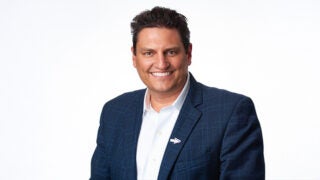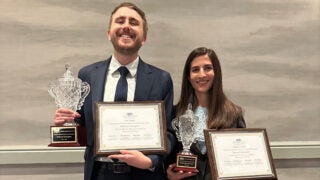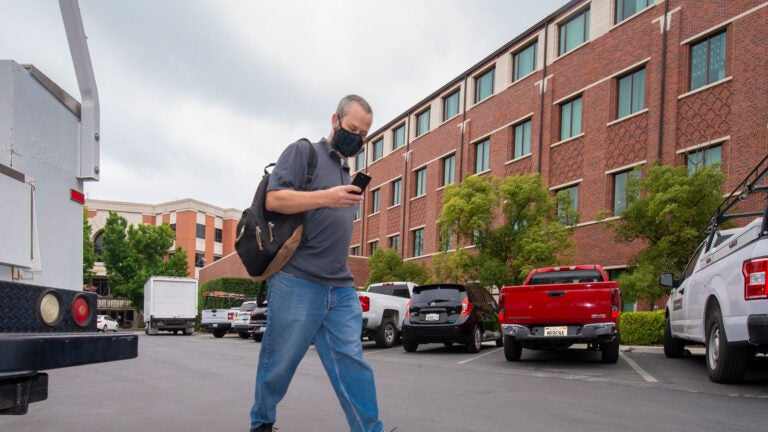
Matthew Dean, who works in Irani Hall, is one of the small number of researchers working on campus. (USC Photo/Gus Ruelas)
As labs reopen, USC researchers adjust to new campus guidelines
As part of USC’s Project Restart, many researchers have been allowed to return to their labs. Now, they’re figuring out how to conduct research in the COVID-19 era.
Scientist Matthew Dean was one of the few people — if not the only person — allowed in Irani Hall after USC’s University Park Campus closed in the spring due to COVID-19. His footsteps echoed in hallways once crisscrossed by students and faculty.
“It was very strange,” Dean said. “It was almost like something out of a movie.”
Dean, an associate professor of molecular and computational biology at the USC Dornsife College of Letters, Arts and Sciences, was allowed to come to campus once a week to check on the mice in his lab. But for the last several weeks, he’s no longer been alone.
As part of USC’s Project Restart, many researchers — as well as graduate and postdoctoral students — have been allowed to return to their labs at 30% capacity. Conducting research looks far different than it did before COVID-19, though. Labs must be extensively cleaned, researchers must be masked and stay far apart, and everyone must pass a health check before entering campus.
To Dean, it’s all worth it. “I was delighted to do whatever it took just to get back in the lab,” he said.
Dean directs graduate studies for the Molecular Biology PhD program. Lab work makes up the largest part of the program’s research, so being unable to do any for months has been difficult.
“That’s the engine of data that gives us everything — papers, grant writing, everything stems from the lab,” Dean said.
The university is now in the second phase of a four-phase restart plan. In this phase, researchers who can only pursue their work on campus — not remotely — may be allowed to come back. Before they can return to campus, though, each researcher, lab and group has to submit a plan. They must show how they’ll observe university-mandated guidelines and exactly how they’ll move around and work in the labs. Several levels of reviewers examine the plan carefully before approval. In addition, each USC school has its own plan to ensure safety.
USC establishes strict guidelines as labs reopen
“We’re trying to figure out how we can optimize the space we have to allow the most amount of research possible while protecting the health of our researchers,” said Steve Bradforth, professor of chemistry at USC Dornsife.
Bradforth is also on the university’s research restart working group. The university sees research as a relatively low-risk activity, he explained. No one got infected on campus in the first month since researchers returned, according to USC Student Health.
Returning to campus is entirely optional, but Bradforth said the university wants those who return to treat exposure as a possibility: “We are asking our researchers to understand that, if and when he or she comes back to campus, it is not a 100% safe environment and they must be taking measures to protect themselves.”
Anyone who has symptoms suggestive of COVID?19 or who has been around others who have tested positive should stay home. The same goes for anyone who has recently traveled outside the United States. Information on these requirements is available on USC’s COVID-19 website.
After reviewers approve a unit’s research return plan, all researchers in the unit who want to return to the lab must first submit a detailed plan for a safe return to research and have that approved by their unit, and then complete a Trojan Learn training module on COVID-19 hygiene and practices. Once approved for on-campus work, researchers must complete a daily online campus check?in process called Trojan Check every day they want to enter campus. It includes questions about possible COVID-19 symptoms. Finally, they must reserve access to the building where they work for a specific time period.
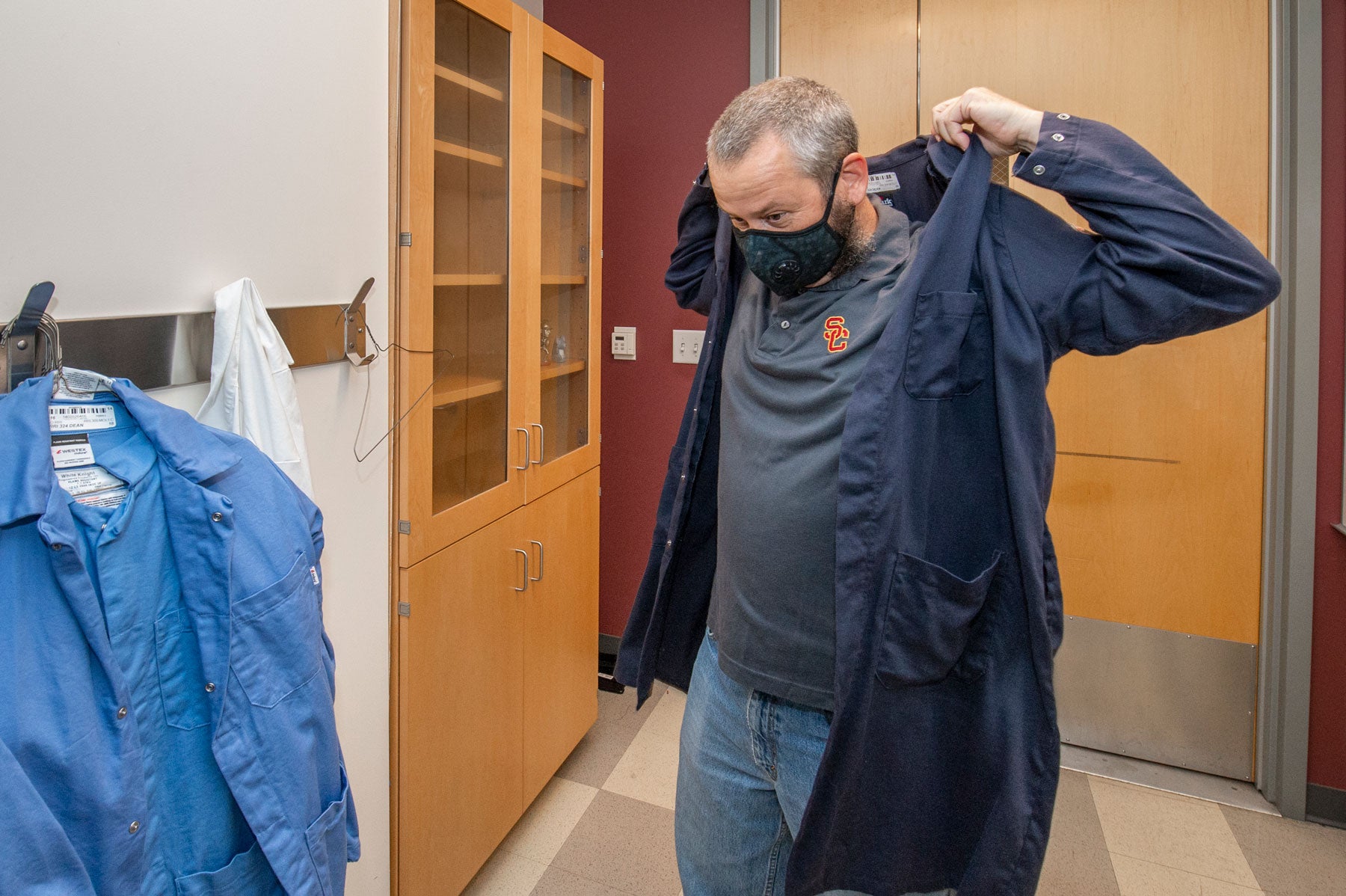
While in the lab, researchers must stay 6 feet or farther away from other people at all times. This means that most elevators, bathrooms and other small public spaces can only be used by one person at a time. USC provides masks or other facial coverings to the lab faculty, staff and students. Scientists must always wear them, except when isolated in a private space. They also might have to use gloves, disposable gowns, face shields, shoe covers or other protective gear in situations of increased risk of exposure or transmission.
“We’re not making any assumptions that people are all virus-negative or that work surfaces don’t need to be cleaned down,” Bradforth said. “There’s a very rigorous process in place to make sure that everybody knows that there potentially could be a risk.”
New safety measures and research’s low risk for virus spread largely drove the decision to allow researchers to return, Bradforth said. But another consideration lies in federal funding for research. Failing to complete research projects could jeopardize future funding and critical financial support for USC’s graduate students and postdocs.
“The majority of projects have government contracts, and the federal government is expecting progress,” Bradforth said.
Researchers embrace even limited opportunities for lab work
That’s also a concern for Eun Ji Chung, an assistant professor of biomedical engineering at the USC Viterbi School of Engineering. Chung, part of her department’s restart committee, said the planning and preparedness eased the transition back into the lab for her team of seven graduate students and postdocs.
Also on Chung’s team: a postdoc researcher who she has yet to see in person. Chung hired her in March before the pandemic escalated, so she brought the new team member into the lab remotely during the shutdown.
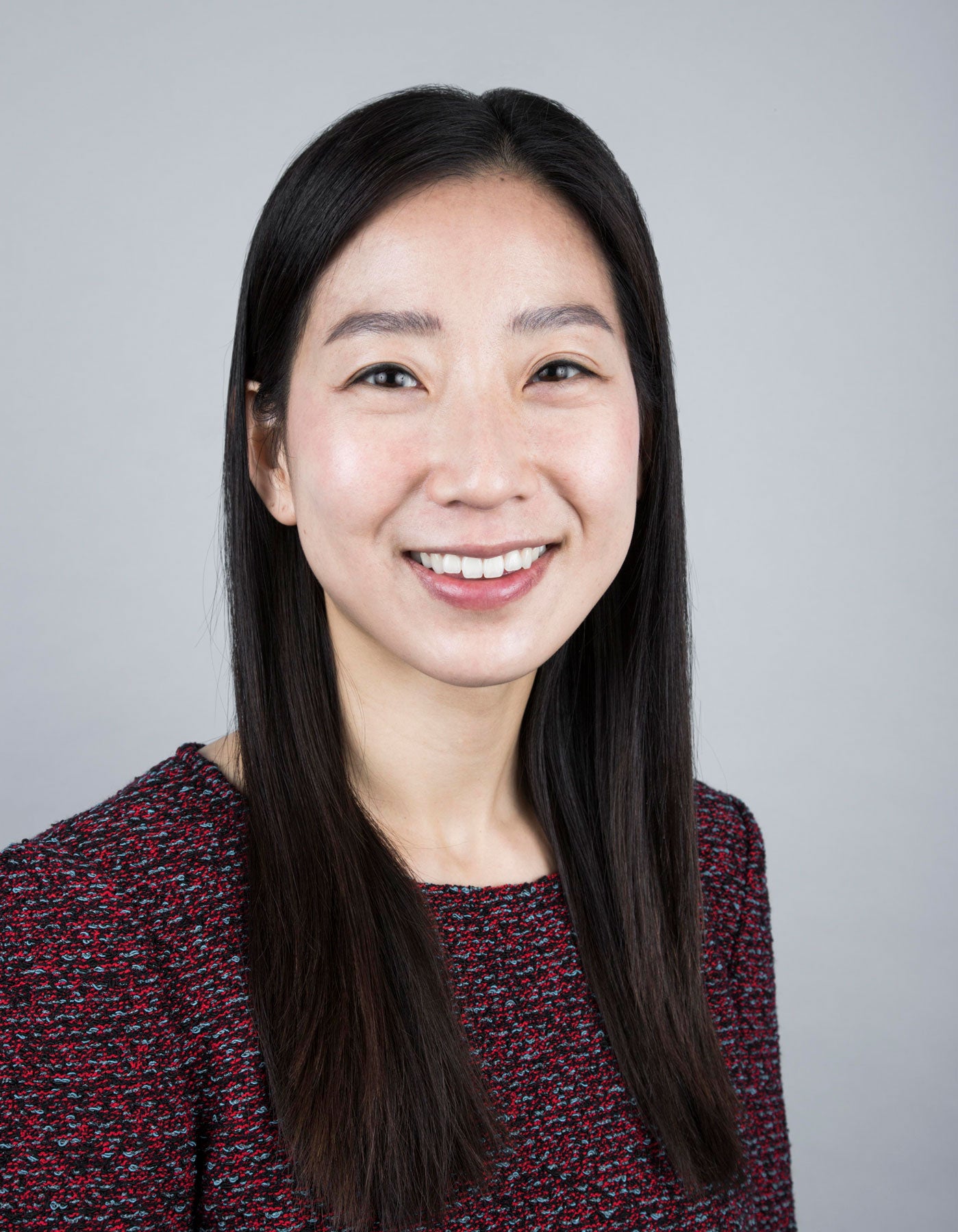
“She’ll go to our building for the first time this week and meet some lab personnel, but I won’t be able to meet her for a little while,” Chung said.
Chung also has one undergraduate and two high school summer students in the lab — but all three of them only work online, according to university policy.
COVID-19 has kept undergrads and high school students from gaining important lab experience, Chung said, a fact that pains her and her fellow researchers. Dean, the USC Dornsife biologist, said he focuses on four or five big projects every day while smaller projects suffer. That’s because undergrads run most of them, he said, and they take on that responsibility almost entirely.
“Without undergrads, there are going to be a lot of projects left kind of dangling in the wind until somebody can devote attention to them,” he added.
As much as Dean and Chung would like to have researchers from undergraduate ranks and beyond in their labs, they both understand that even running at 30% capacity is better than not being allowed in the labs at all.
Staffing a lab at that low level is difficult, “but it can be done,” Dean said. “And it’s so much better than being shut down.”

